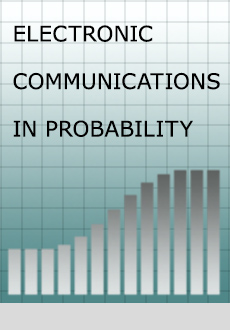Abstract
The nature of the alignment with gaps corresponding to a longest common subsequence (LCS) of two independent iid random sequences drawn from a finite alphabet is investigated. It is shown that such an optimal alignment typically matches pieces of similar short-length. This is of importance in understanding the structure of optimal alignments of two sequences. Moreover, it is also shown that any property, common to two subsequences, typically holds in most parts of the optimal alignment whenever this same property holds, with high probability, for strings of similar short-length. Our results should, in particular, prove useful for simulations since they imply that the re-scaled two dimensional representation of a LCS gets uniformly close to the diagonal as the length of the sequences grows without bound.
Citation
Christian Houdré. Heinrich Matzinger. "Closeness to the diagonal for longest common subsequences in random words." Electron. Commun. Probab. 21 1 - 19, 2016. https://doi.org/10.1214/16-ECP4029
Information





